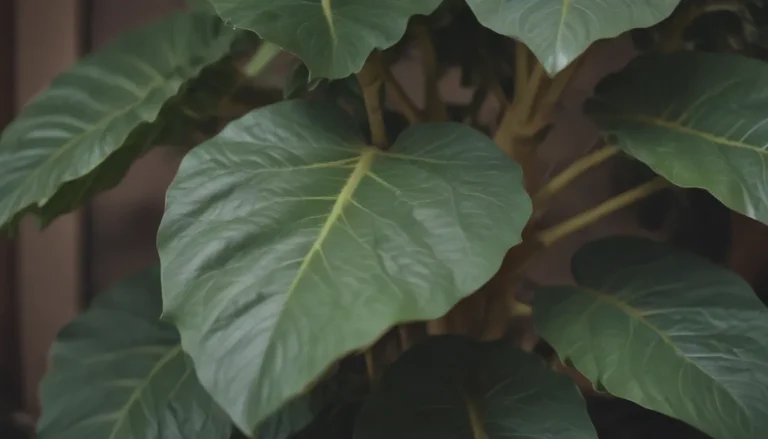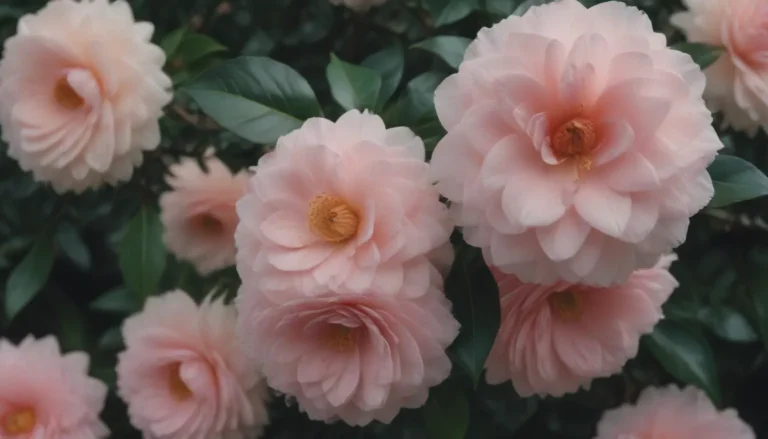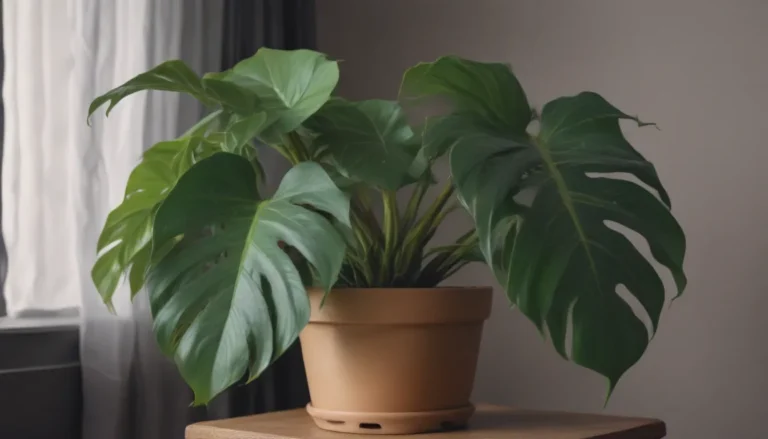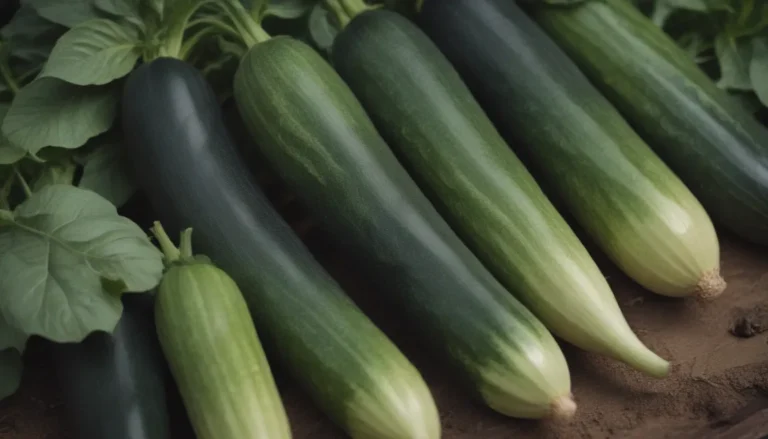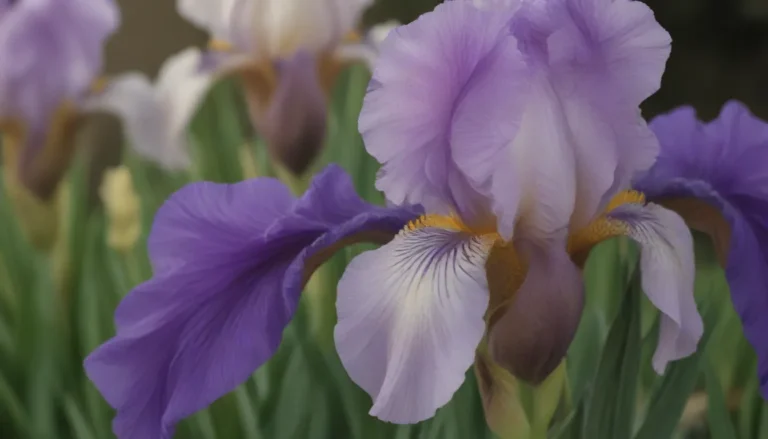22 Unique Flowers to Grow in Your Garden: A Guide to Eye-Catching Blooms
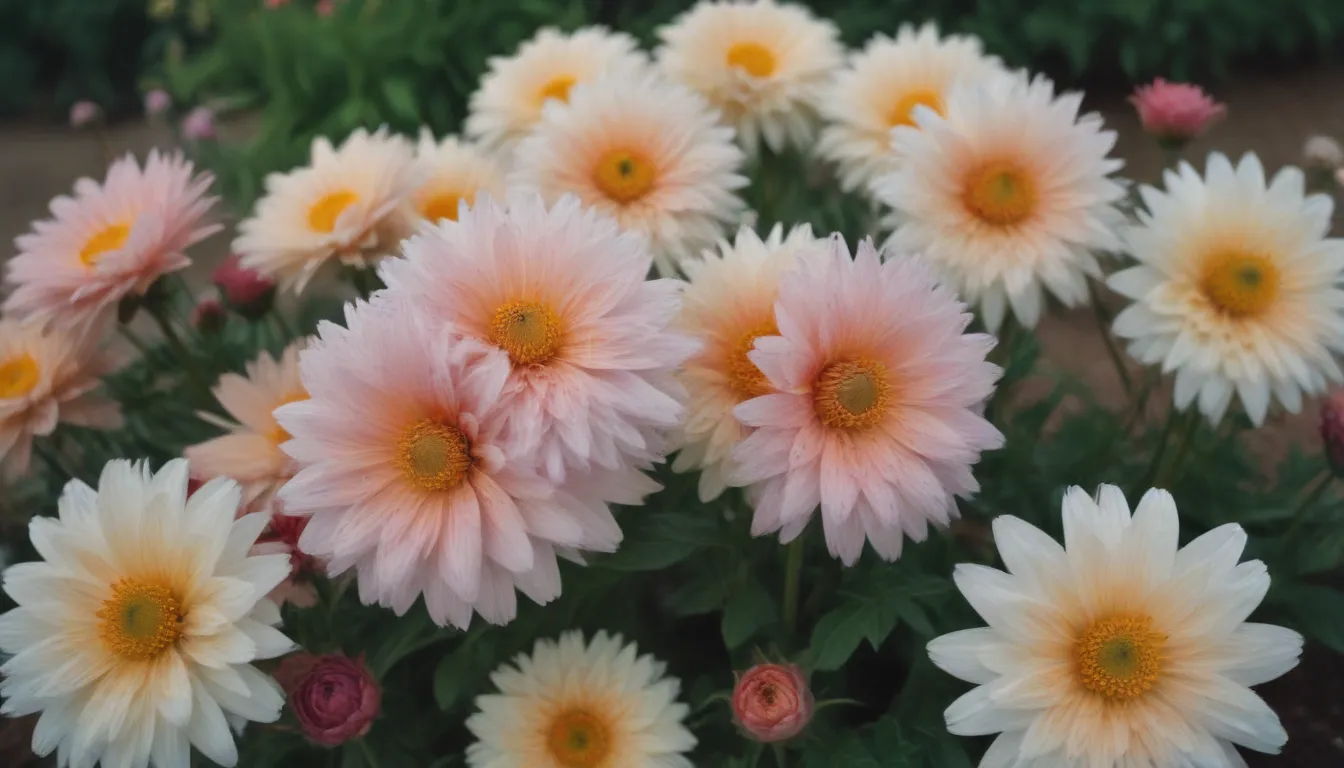
Are you looking to add a splash of color and texture to your garden with some truly unique flowers? While all flowers are beautiful in their own right, there are some blooms that are truly extraordinary and sure to make a statement in your garden. From vibrant colors to oddly shaped petals, these flowers are not your average garden variety. In this article, we will explore 22 of the most unique flowers to grow in your garden, along with some key information on how to care for these special plants.
Before You Begin: A Word of Caution
Before you start planting any of these unique flowers in your garden, it’s important to note that some of the plants on this list may be toxic to people and pets. Always do your research and ensure that the flowers you choose are safe for your family and furry friends.
Bird of Paradise (Strelitzia reginae)
The Bird of Paradise is a tropical plant native to South Africa, known for its uniquely shaped blooms that resemble the bird species of the same name. These flowers are not only beautifully colored but also add a touch of exotic flair to your garden. While the plant thrives in hot, humid climates, northern gardeners may need to grow it as an annual or overwinter it indoors.
- USDA Hardiness Zones:
- Flower Color Varieties:
- Light:
- Soil Needs:
- Mature Size:
- Deer Resistant:
Middlemist’s Red (Camellia spp.)
Middlemist’s Red is a rare Camellia flower with stunning red-pink rose-like blooms and rich green foliage. Originating from China, this rare flower is now only found in Chiswick, West London, and New Zealand. Its unique beauty and rarity make it a must-have for any garden.
- Flower Color Varieties:
- Light:
Corpse Flower (Titan arum)
The Corpse Flower is infamous for its foul-smelling blooms that mimic the scent of rotting flesh to attract pollinators. This unique plant can take up to seven years to bloom, with flowers weighing up to 50 pounds. While the smell may be off-putting, the Corpse Flower is definitely a conversation starter in any garden.
- USDA Hardiness Zones:
- Flower Color Varieties:
- Light:
- Soil Needs:
- Mature Size:
- Deer Resistant:
Blue Poppy (Meconopsis betonicifolia)
The Blue Poppy is a show-stopping plant with unique blue umbrella-like flowers and fuzzy yellow centers. These striking blooms can stretch up to 5 inches across and add a touch of whimsy to any garden. However, they can be temperamental to grow, requiring consistent moisture and specific temperature conditions.
- USDA Hardiness Zones:
- Flower Color Varieties:
- Light:
- Soil Needs:
- Mature Size:
- Deer Resistant:
Ghost Orchid (Dendrophylax lindenii)
The Ghost Orchid is a striking orchid plant with dramatic white blooms and a light, apple-like fragrance. This endangered flower is native to Florida, the Bahamas, and Cuba, typically growing on trees with its bare roots clinging to branches and trunks. A true gem for any garden, the Ghost Orchid adds an ethereal touch to your outdoor space.
- USDA Hardiness Zones:
- Flower Color Varieties:
- Light:
- Planting:
- Mature Size:
Crown Imperial (Fritillaria imperialis)
The Crown Imperial is a tall spring bulb plant with bell-shaped blooms that form a crown atop the plant. While the flowers may have a pungent odor, their unique beauty is worth the scent. To care for this plant, cut back the foliage in summer and mulch for winter insulation.
- USDA Hardiness Zones:
- Flower Color Varieties:
- Light:
- Soil Needs:
- Mature Size:
- Deer Resistant:
Secret Lust Coneflower (Echinacea ‘Secret Lust’)
The Secret Lust Coneflower is not your average coneflower, with a puffy center disk instead of a traditional cone. These fragrant, colorful flowers are perfect for attracting birds to your garden. Ensure good drainage for this plant, as it can tolerate most conditions except for soggy soil.
- USDA Hardiness Zones:
- Flower Color Varieties:
- Light:
- Soil Needs:
- Mature Size:
- Deer Resistant:
Purple Pitcher Plant (Sarracenia purpurea)
The Purple Pitcher Plant is a unique carnivorous plant that traps insects in its pitcher-shaped leaves. With interestingly shaped flowers and a preference for boggy soil, this plant is perfect for adding a touch of intrigue to your garden. Keep the soil consistently moist to ensure the plant thrives.
- USDA Hardiness Zones:
- Flower Color Varieties:
- Light:
- Soil Needs:
- Mature Size:
- Deer Resistant:
Sundew (Drosera capensis)
The Sundew is another carnivorous plant with faux flowers that trap insects in sticky droplets. Native to boggy conditions, this plant thrives in moist soil and adds a touch of uniqueness to your garden. Keep the soil consistently moist to ensure the Sundew flourishes.
- USDA Hardiness Zones:
- Flower Color Varieties:
- Light:
- Soil Needs:
- Mature Size:
- Deer Resistant:
Red Hot Poker Plant (Kniphoff spp.)
The Red Hot Poker Plant is known for its cylindrical shape and warm-toned flower spikes. Some varieties even feature bicolored flowers that resemble flames. To encourage further flowering, deadhead the blooms regularly and enjoy the unique beauty of this plant in your garden.
- USDA Hardiness Zones:
- Flower Color Varieties:
- Light:
- Soil Needs:
- Mature Size:
- Deer Resistant:
Snake Lily (Amorphophallus Konjac)
The Snake Lily is a unique plant that grows from a corm often used as a food source in certain regions. With one giant leaf and flower stem per year, this plant adds an element of surprise to any garden. Keep the soil moist but not soggy to ensure the Snake Lily thrives.
- USDA Hardiness Zones:
- Flower Color Varieties:
- Light:
- Soil Needs:
- Mature Size:
- Deer Resistant:
Amethyst in Snow (Centaurea montana ‘Amethyst in Snow’)
Amethyst in Snow is a ground cover plant with delicate bicolored blooms featuring white petals and a purple center. To control its spread, divide the plant every few years and promote healthy growth in your garden. This unique flower adds a pop of color to any outdoor space.
- USDA Hardiness Zones:
- Flower Color Varieties:
- Light:
- Soil Needs:
- Mature Size:
- Deer Resistant:
Batik Iris (Iris germanica ‘Batik’)
The Batik Iris is a standout in the Iris genus with bicolored flowers featuring irregular streaks of purple and white. This clumping plant requires division every few years to keep it vigorous and blooming. Add a touch of elegance to your garden with the unique beauty of the Batik Iris.
- USDA Hardiness Zones:
- Flower Color Varieties:
- Light:
- Soil Needs:
- Mature Size:
- Deer Resistant:
Perfect Storm Hibiscus (Hibiscus moscheutos)
The Perfect Storm Hibiscus is a compact hybrid cultivar with showy bicolored blooms that are perfect for small gardens. Its dark green foliage provides visual appeal even when the plant is not in bloom. Fertilize annually in the spring to encourage blooming and healthy growth in your garden.
- USDA Hardiness Zones:
- Flower Color Varieties:
- Light:
- Soil Needs:
- Mature Size:
- Deer Resistant:
Nora Leigh Garden Phlox (Phlox paniculata ‘Nora Leigh’)
Nora Leigh Garden Phlox is a unique plant with variegated leaves and bicolored flowers that attract hummingbirds and butterflies. With sturdy stems and a mild fragrance, this plant is perfect for cut flower arrangements. Deadhead spent blooms to prolong the flowering period and enjoy the beauty of Nora Leigh in your garden.
- USDA Hardiness Zones:
- Flower Color Varieties:
- Light:
- Soil Needs:
- Mature Size:
- Deer Resistant:
Rodger’s Flower (Rodgersia pinnata)
Rodger’s Flower is a statement plant with irregularly shaped plumes of flowers and foliage reminiscent of horse chestnut trees. This plant requires consistently moist soil to thrive, adding a touch of elegance and uniqueness to any landscape. Keep the soil moist to ensure Rodger’s Flower flourishes in your garden.
- USDA Hardiness Zones:
- Flower Color Varieties:
- Light:
- Soil Needs:
- Mature Size:
- Deer Resistant:
Jade Vine (Strongylodon macrobotrys)
The Jade Vine is a creeping plant with mesmerizing greenish-blue flowers that dangle off a central vine, reaching up to 50 feet long in the right climate. This unique plant is threatened by deforestation in its natural habitat, making it a valuable addition to any garden. Ensure the plant receives the proper care to thrive and add a touch of exotic beauty to your outdoor space.
- USDA Hardiness Zones:
- Flower Color Varieties:
- Light:
- Soil Needs:
- Mature Size:
- Deer Resistant:
Chocolate Cosmos (Cosmos atrosanguineus)
The Chocolate Cosmos is known for its dark red, velvety blooms and chocolaty-vanilla fragrance. Native to Mexico, this unique flower thrives in full sun and adds a touch of sumptuous beauty to any garden. With the right care and attention, the Chocolate Cosmos will bloom from late spring through early fall, adding a touch of exotic beauty to your outdoor space.
- USDA Hardiness Zones:
- Flower Color Varieties:
- Light:
- Soil Needs:
- Mature Size:
- Deer Resistant:
Parrot’s Beak (Lotus berthelotii)
The Parrot’s Beak is a striking plant with crimson red blooms that resemble the beak of a tropical bird, set against silvery-green spiky leaves. Blooming in the cooler months, this perennial climber adds a splash of color to your garden before the temperatures rise. Ensure the plant receives the proper care to thrive and enjoy the unique beauty of the Parrot’s Beak in your outdoor space.
- USDA Hardiness Zones:
- Flower Color Varieties:
- Light:
- Soil Needs:
- Mature Size:
- Deer Resistant:
Black Bat Flower (Tacca chantrieri)
The Black Bat Flower lives up to its name with blooms that resemble bat wings and seed pods that resemble a bat face. Native to Asia and Australia, this unique plant blooms from late spring through early fall, adding a touch of intrigue to any garden. Ensure the plant receives the proper care to thrive and enjoy the unique beauty of the Black Bat Flower in your outdoor space.
- USDA Hardiness Zones:
- Flower Color Varieties:
- Light:
- Soil Needs:
- Mature Size:
- Deer Resistant:
Queen of the Night (Epiphyllum oxypetalum)
The Queen of the Night is a stunning flower with brilliant white blooms that only open at night, creating a striking contrast against the darkness. A member of the cactus family, this flower adds a touch of elegance and beauty to any garden. Ensure the plant receives the proper care to thrive and enjoy the unique beauty of the Queen of the Night in your outdoor space.
- USDA Hardiness Zones:
- Flower Color Varieties:
- Light:
- Soil Needs:
- Mature Size:
- Deer Resistant:
Corpse Lily (Rafflesia arnoldii)
The Corpse Lily is a giant flower with a dramatic cluster of blooms that emit a scent similar to decaying flesh to attract pollinators. Native to the rainforests of Sumatra and Borneo, this unique plant adds a touch of drama to any garden. Ensure the plant receives the proper care to thrive and enjoy the unique beauty of the Corpse Lily in your outdoor space.
- USDA Hardiness Zones:
- Flower Color Varieties:
- Light:
- Soil Needs:
- Mature Size:
- Deer Resistant:
Growing Unique Flowers in Your Garden: Tips and Considerations
If you’re considering adding any of these unique flowers to your garden, there are a few things to keep in mind to ensure they thrive and make a statement in your outdoor space. Here are some tips and considerations to keep in mind:
- Take into account the mature size of the flowers and nearby plants to ensure they don’t impede each other’s growth.
- Research the specific growing requirements of each flower to ensure it is suitable for your region.
- Check whether the species is invasive to your area, especially for climbing and vine plants.
- Consider the rarity and unique features of each flower to create a truly eye-catching garden.
Middlemist’s Red: The Rarest Flower in the World
Did you know that Middlemist’s Red is considered the rarest flower in the world, with only two plants left—one in the UK and one in New Zealand? This stunning camellia flower was originally brought to London by John Middlemist and remains a coveted plant for gardeners around the world.
The Most Gifted Flower: Agave americana
While all of these unique flowers are truly special, the award for the most patient gardener goes to Agave americana, also known as the century plant. This sun-loving plant blooms once every 100 years, reaching heights of up to 6 feet. A true testament to the beauty of nature, the century plant is worth the wait for those with patience.
In conclusion, adding unique flowers to your garden is a wonderful way to infuse color, texture, and visual interest into your outdoor space. Whether you choose the exotic blooms of the Bird of Paradise or the striking colors of the Parrot’s Beak, these flowers are sure to make a statement in your garden. With proper care and attention, these unique plants will thrive and bring joy to both you and your garden visitors.
References:
– Poison Control: Poisonous Plants
– ASPCA: Toxic and Non-toxic Plants
